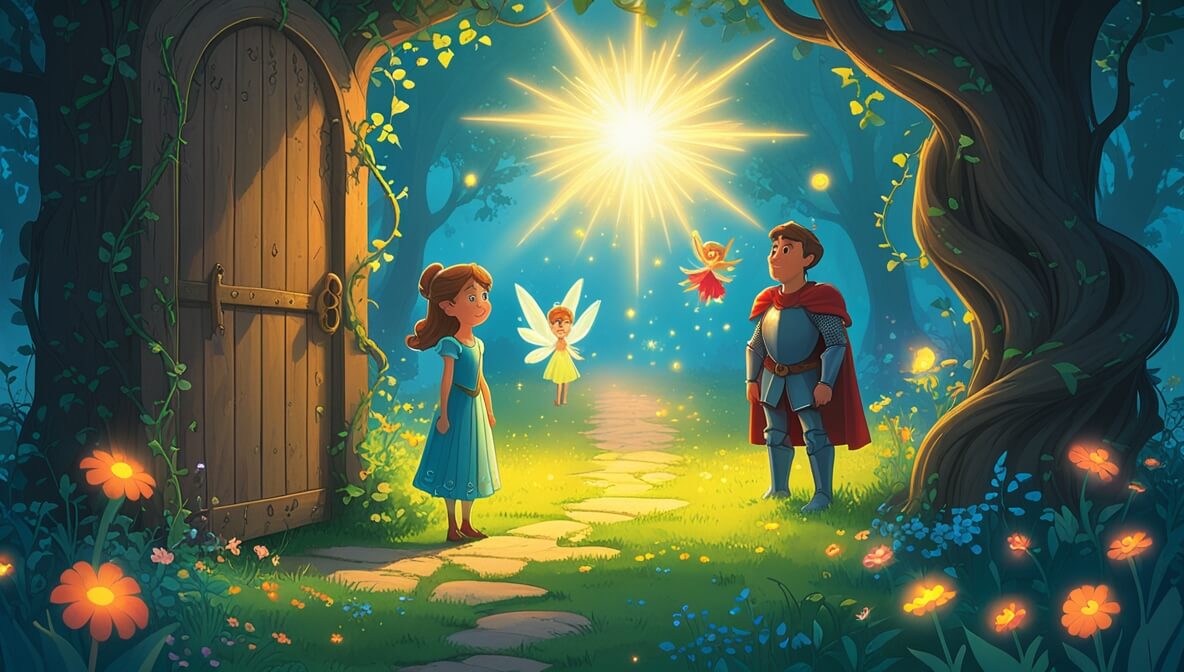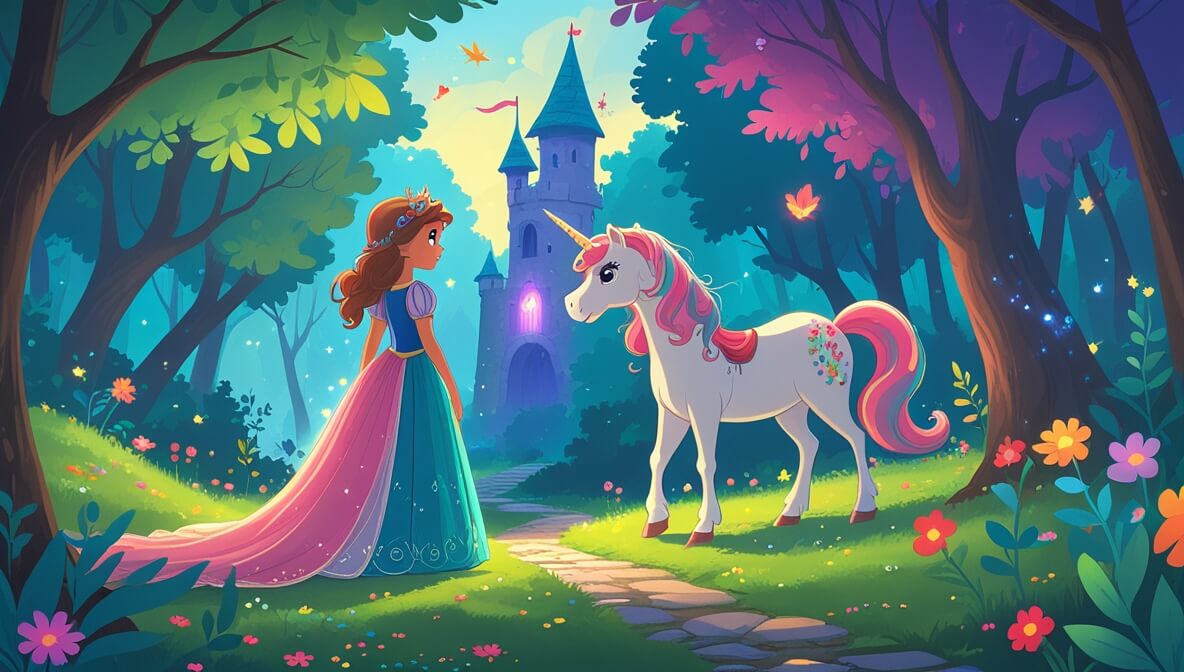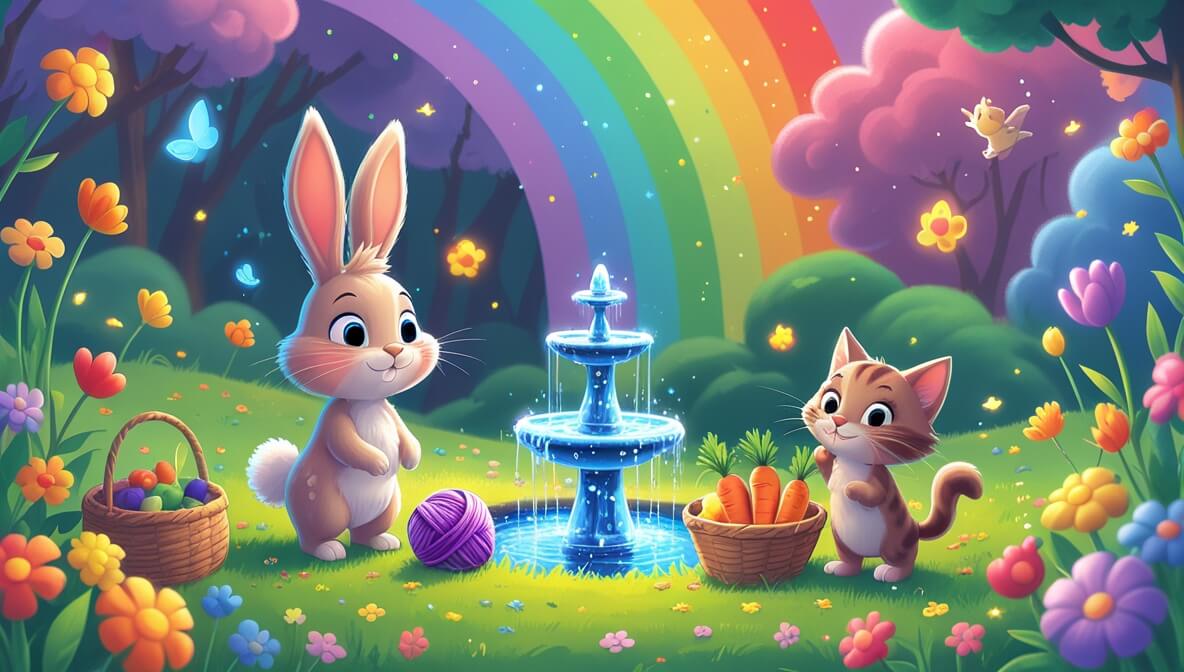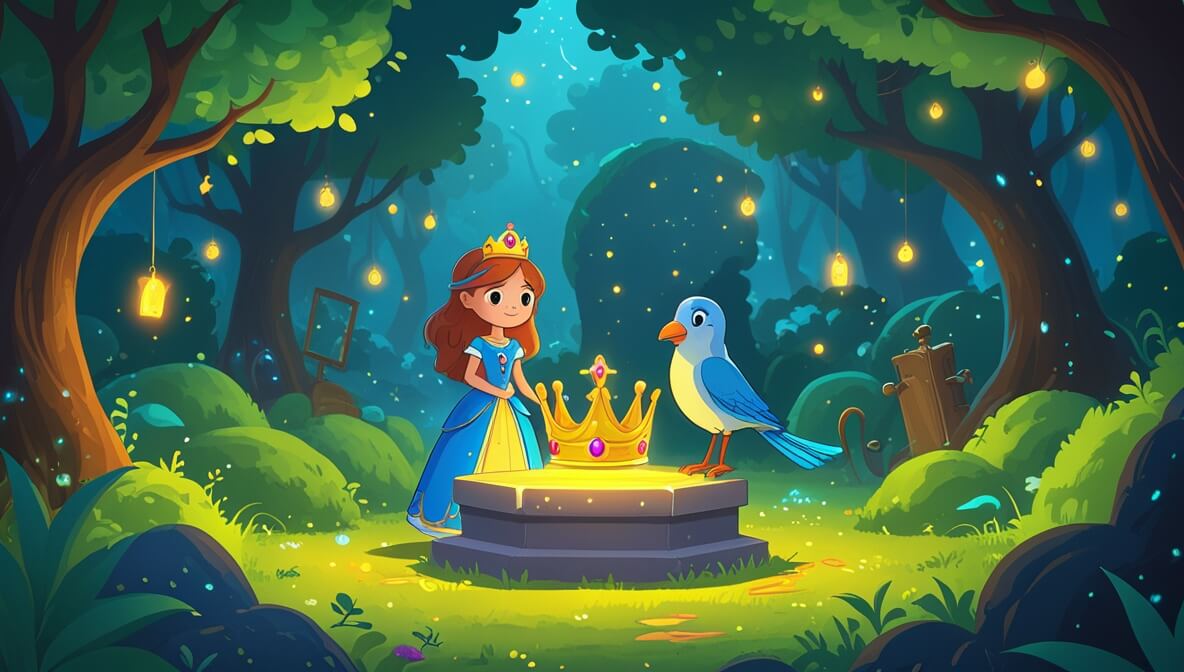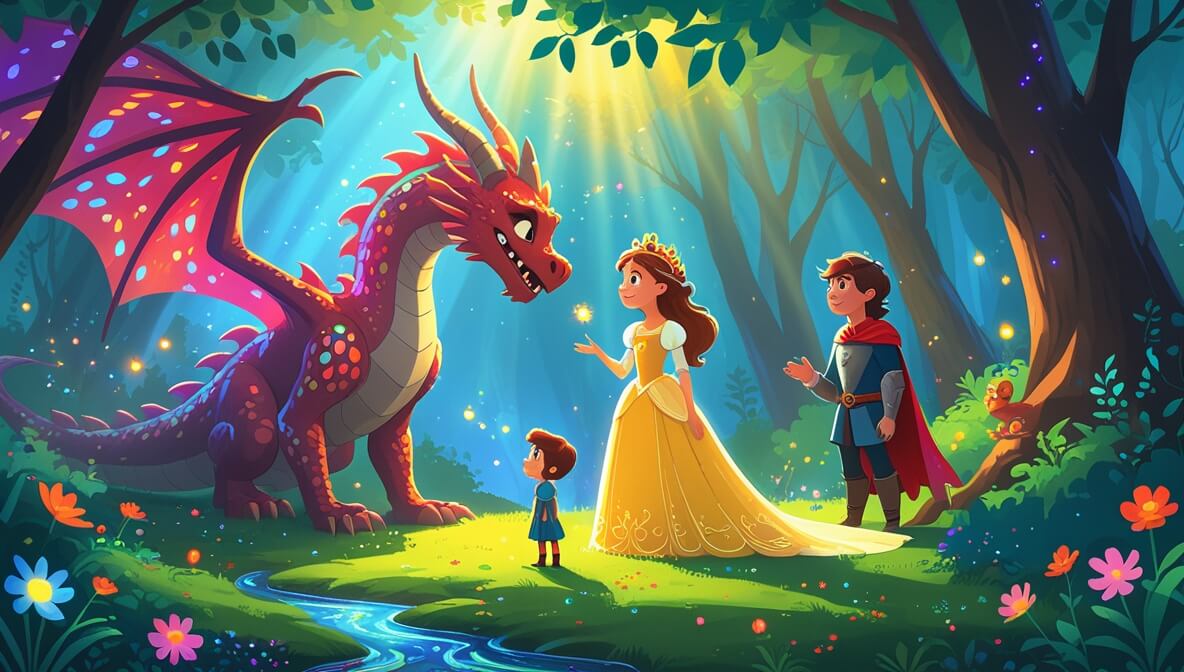A little bear discovers the magic of bedtime and learns that the moon is his gentle friend, watching over him as he sleeps.
Age Recommendation
0 – 4 years
Characters
Characters:
- Fuzzy (a curious little bear with a soft, fluffy coat)
- Luna (a bright and caring moon who loves to watch over the night)
Story
In a cozy forest, there lived a little bear named Fuzzy. Every night, Fuzzy looked up at the sky and wondered about the big, bright moon. One evening, as the stars began to twinkle, Fuzzy decided to ask the moon a question.
The Moon’s Gentle Light
“Hello, Moon!” Fuzzy called out. “Why do you shine so brightly?” The moon, named Luna, smiled down at the little bear. “I shine to keep you company while you sleep,” Luna replied. “I am your gentle friend in the sky.”
A Soothing Lullaby
Fuzzy felt a warm, cozy feeling in his heart. Luna began to hum a soft lullaby, filling the night with a soothing melody. As Fuzzy listened, he felt his eyes get heavy, and he snuggled into his bed of leaves.
Sweet Dreams, Little Bear
“Thank you, Luna,” Fuzzy whispered as he closed his eyes. “I feel safe knowing you are watching over me.” And with that, the little bear drifted into a deep, peaceful sleep, dreaming of stars and moonbeams.
The end.
Moral of the Story
It teaches children that bedtime is a time of comfort and safety, where even the night sky can be a friendly presence.
Questions to Think About
- Why did Fuzzy want to talk to the moon?
- How did Luna help Fuzzy feel safe?
- What does Luna do at night?
- Do you have any bedtime routines that make you feel cozy?
- What would you say if you could talk to the moon?
Do You Know
- The moon doesn’t actually shine on its own. It reflects the light from the sun!
- Bears like Fuzzy can live in forests, mountains, and even snowy places!
Word Explorer
- Cozy: A warm and comfortable feeling, like being cuddled up in a blanket.
- Lullaby: A gentle song that helps people fall asleep.
- Reflect: To bounce back light or heat, like how the moon reflects the sun’s light.
Emotions in the Story
- Curiosity: When Fuzzy wanted to know why the moon was so bright.
- Comfort: When Luna sang her soothing lullaby.
- Safety: When Fuzzy realized Luna would watch over him as he slept.
Color Your Scene
Imagine Fuzzy curled up under the twinkling stars, with Luna shining brightly in the sky. Can you draw Fuzzy’s cozy bed of leaves and the gentle glow of the moon? Use soft blues for the night sky and bright silver for Luna’s light.
Parents’ Corner
This story is a sweet way to discuss bedtime routines and the comfort they bring. You can talk to your child about:
Nighttime Safety: Reassure them that, like Luna, you’re always there to watch over them as they sleep.
Bedtime Routines: Encourage them to think about their own comforting bedtime rituals, like listening to a story or having a favorite toy.
The Beauty of Nature: Foster an appreciation for the wonders of the night sky and the calming effect it can have.






